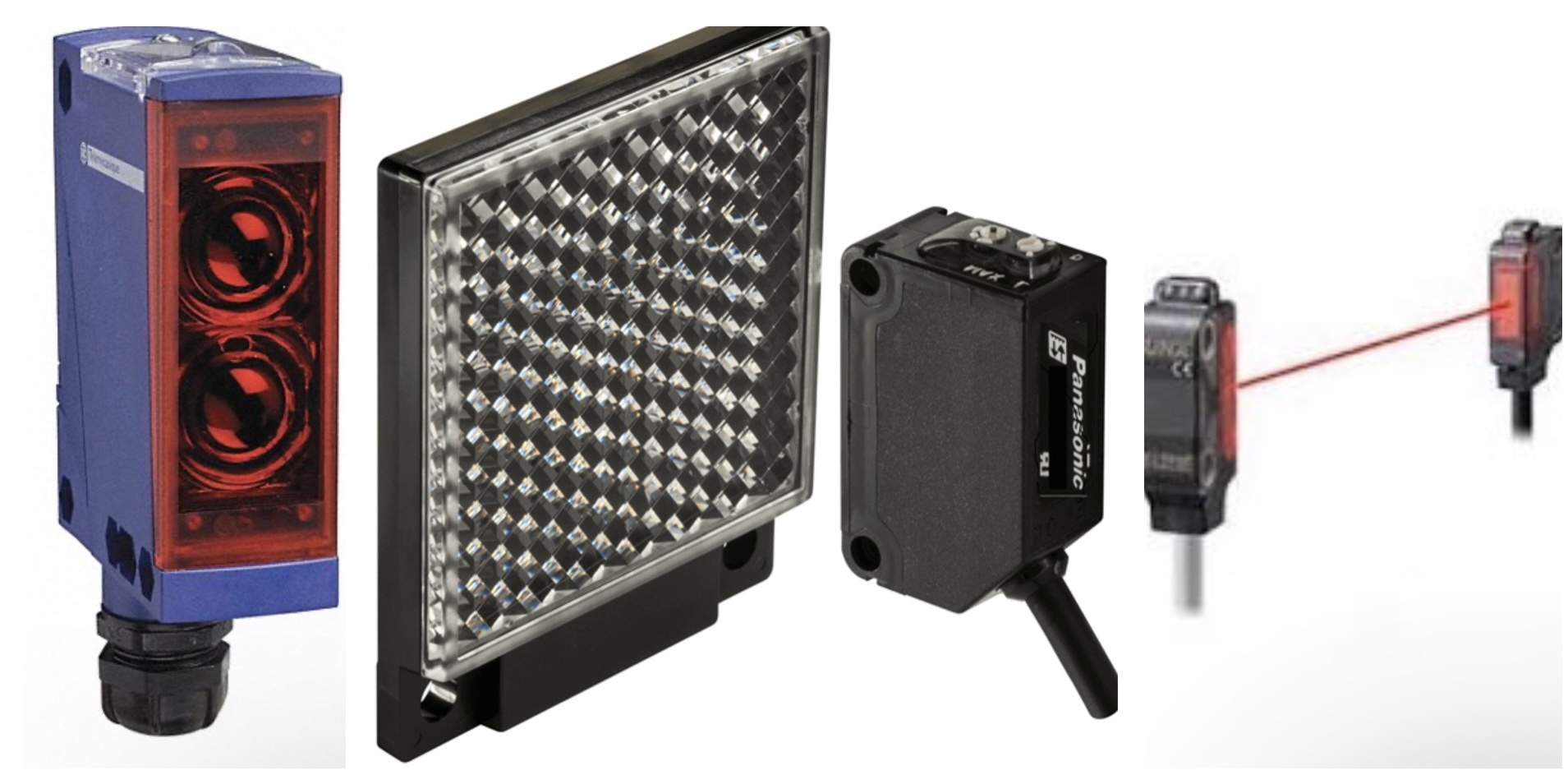News & Events
Understanding Photoelectric Sensors
What are photoelectric sensors?
Photoelectric sensors use light energy to detect the presence or position of an object and produce an electrical output. They are available in many form factors.
What kind of light energy?
The three most common types of light used are visible, infrared, and laser.
There are three main types of photoelectric sensors, these are:
Diffuse – Diffuse sensors consist of a single unit that both transmits and receives light energy. The sensor detects light reflected from an object, or from a known background. These sensors are relatively short range. Diffuse sensors nearly always use a discrete output. Infrared light is very commonly used in diffuse sensors.
Retroreflective – Also called reflex sensors, retroreflective sensors employ an emitter/receiver unit like a diffuse sensor. In this case the light energy is reflected from a polarized prismatic reflector. This gives retroreflective sensors greater range than diffuse sensors, but it does require alignment of the sensor and reflector. Retroreflective sensors usually employ either visible or infrared light, sometimes at the same time. These sensors also nearly always employ a discrete output. In some cases, laser light is used, and the reflector is placed on a moving object. These specialized retroreflective sensors can measure distance between the emitter and reflector and may have an analog output.
Through Beam – Through beam sensors consist of separate emitter and receiver units. These sensors, especially when using laser light, have very long ranges. One drawback of through beam sensors is that both units require power. Through beam sensors are nearly always discrete output devices.
Common applications:
• Diffuse
• Item count
• Bin level
• Presence confirmation
• Retroreflective
• Item count
• Presence conformation
• Intrusion/transit detection
• Position/distance
• Through Beam
• Intrusion/transit detection
Application considerations:
Photoelectric sensors employ light energy, airborne dust or mist can scatter that light and interfere with proper operation of the sensor. Also, photoelectric sensors, especially those using visible light, do not function well in direct sunlight. Retroreflective and through beam sensors are sensitive to vibration causing misalignment between the transmitter and receiver (through beam) or the transceiver and reflector (retroreflective). When using a diffuse sensor, the color, reflectivity, and transparency of the object to be detected, or the background, must be considered.

